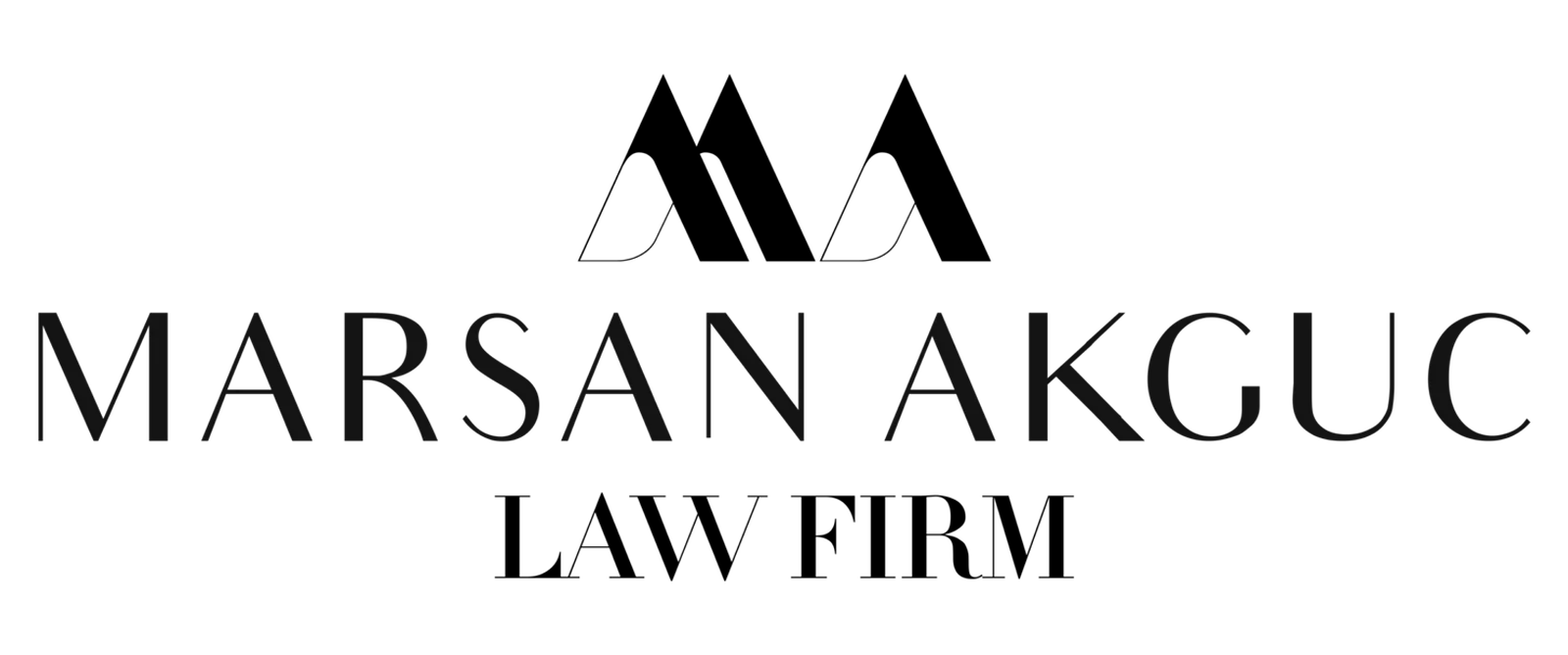Intellectual property (IP your inventions, brand signals, creative content, product designs, and confidential know-how is often the most valuable asset your business owns. It powers margins, attracts investment, and compounds over time. Because IP can also be copied, leaked, or misused in seconds, protecting it isn’t optional it’s core risk management.
This comprehensive guide from Marsan Akguc Law explains what counts as IP, how the major protection regimes work, and the concrete steps companies should take to register, monitor, enforce, and monetize their portfolios.
What Is Intellectual Property?
Intellectual property refers to creations of the mind that have commercial value inventions, literary and artistic works, software, designs, logos, names, slogans, symbols, images, trade dress, and confidential business information. IP laws give creators exclusive rights for defined periods, enabling them to control use, license to others, and recover damages for infringement.
The global framework is shaped by treaties (e.g., Paris Convention, Berne Convention, TRIPS, WIPO treaties) and implemented through national laws (e.g., U.S. Patent Act, Lanham Act, Copyright Act, state trade secrets statutes).
Key idea: IP protects the expression of an idea (and in patents, qualifying inventions), not bare ideas themselves.
Two Pillars in International IP (WIPO View)
- Industrial Property: Patents, trademarks, industrial designs, geographical indications (e.g., region-based names like Champagne).
- Copyright & Related Rights: Literary, artistic, and some software/architectural works, plus certain performance and broadcasting rights.
Don’t confuse “industrial property” (the IP category) with “industrial real estate” (factories/warehouses). Different worlds.
The Four Primary Types of IP Protection (for Businesses)
1) Patents (Inventions & Functional Solutions)
- What they cover: New, useful, non-obvious inventions (devices, methods, compositions, software processes, etc.).
- Term (U.S.): 20 years from the earliest effective non‑provisional filing date, subject to maintenance fees and possible adjustments.
- Core requirement: Enablement you must disclose enough detail that a skilled person could practice the invention.
- Value: Exclusivity to make/use/sell/import; leverage for licensing and deterrence.
- Practical tip: File provisional first to lock a priority date, then follow with a non-provisional within 12 months.
2) Trademarks (Brand Identifiers)
- What they cover: Names, logos, taglines, trade dress, sounds, colors anything that identifies source.
- Term: Potentially indefinite with continued use and timely renewals (e.g., §8 Declaration of Use between years 5–6, §9 Renewal every 10 years).
- Value: Prevents consumer confusion, protects reputation, anchors marketing spend.
- Practical tip: Clear the mark (search), then file; maintain consistent specimens of use and watch for genericide.
3) Copyright (Original Works of Authorship)
- What it covers: Books, articles, music, art, photographs, films, software code, choreography, website content, marketing collateral.
- Term (general rule): Life of the author + 70 years; work-for-hire and anonymous/pseudonymous works: For works made for hire, anonymous, or pseudonymous works: 95 years from publication or 120 years from creation, whichever expires first.”
- Value: Exclusive rights to reproduce, distribute, display, perform, and create derivatives; statutory damages available with timely registration.
- Practical tip: For businesses, use work-made-for-hire agreements and assignment clauses with employees/contractors.
4) Trade Secrets (Confidential Business Information)
- What they cover: Non-public info that gives a competitive advantage formulas, code, models, datasets, pricing, customer lists, methods.
- Term: As long as secrecy is reasonably maintained.
- Value: Immediate, inexpensive protection; complements patents (or replaces them where disclosure would be risky).
- Practical tip: Use layered controls: NDAs, access limits, encryption, logging, training, exit interviews.
Copyright vs. IP: Clearing the Confusion
IP is the umbrella. Copyright is one branch. Copyright protects original expression fixed in a tangible medium; it does not protect ideas, procedures, systems, or methods (though the text describing them can be protected).
Fair use (U.S.) is a case‑by‑case judicial doctrine that may permit limited use of copyrighted works for purposes such as criticism, commentary, news reporting, teaching, scholarship, or research. Once protection expires, works enter the public domain.
How to Protect Your Business IP: A Four-Part Playbook
1) Register (Where Registration Exists)
- Patents: Provisional → non-provisional (U.S. PTO); consider PCT to keep options open internationally.
- Trademarks: File in key jurisdictions; cover core goods/services now and plan for brand extensions later.
- Copyrights: Timely registrations unlock statutory damages and attorney’s fees (strong leverage).
- Designs: In the U.S., design patents protect the ornamental aspects of functional items; in the EU/UK, registered designs protect the appearance of a product. In the U.S., unregistered trade dress may also protect product look if it is non‑functional and has acquired distinctiveness.
Why register? Public notice, stronger remedies, customs recordation, platform takedowns, and investor diligence.
2) Monitor (Because Early Detection = Cheaper Fixes)
- Set watch services for similar marks and domain typos.
- Crawl marketplaces (Amazon, Etsy, Alibaba), app stores, and social platforms for knockoffs.
- Track code/IP leaks (e.g., Git repos), and use brand protection tools for images/trade dress.
- Calendar renewals and maintenance deadlines.
3) Enforce (Graduated Response)
- Start proportionately: cease-and-desist, platform takedowns, registrar/domain complaints (UDRP).
- Escalate as needed: customs recordation, TROs/injunctions, damages suits, criminal referrals (counterfeiting).
- Keep evidence: dated screenshots, purchase tests, chain-of-custody for seized goods.
4) Manage & Monetize (Turn IP into ROI)
- Use licenses, franchises, joint ventures, tech transfers with clear scopes, territories, royalties, audit rights.
- Maintain an IP register (what you own, where it’s filed, status, agreements).
- Align IP with fundraising/M&A: representations, assignments, chain of title, open-source compliance.
Practical Policies Every Company Should Adopt
- IP Ownership Agreements: Employment and contractor templates assigning all IP to the company (with moral rights waivers where permitted).
- Invention Disclosure Program: Simple internal form + review committee to capture innovations early.
- Trade Secret Protocols: Mark “CONFIDENTIAL,” role-based access, encryption, secure repositories, DLP tools, incident response plan.
- Brand Style & Use Guide: Prevent internal misuse that can weaken trademarks; standardize logo and tagline use.
- Open-Source Compliance: SBOMs, license reviews, and approvals before shipping code.
- Vendor & NDA Hygiene: Mutual NDAs as needed, but narrow access to “need-to-know”; include non-reverse-engineering clauses where appropriate.
- Exit Checklist: Recover devices/keys, disable access, remind of confidentiality and return-of-materials obligations.
Common Mistakes That Cost Companies Dearly
- Waiting to file (losing priority or being blocked by your own public disclosure).
- DIY filings with vague claims or wrong classes weak rights are expensive to fix.
- No written assignments from contractors (default ownership may sit with them).
- Over-broad NDAs no one follows; courts look for reasonable measures, not perfect ones.
- Ignoring international strategy until it’s too late (many countries require pre-filing before public disclosure).
- Letting trademarks drift toward generic terms (use your mark as an adjective, not a noun/verb).
Quick Reference: Which Tool Fits Which Asset?
| Asset | Best Primary Tool | Also Consider |
| New technical invention | Patent | Trade secret (if reverse-engineering is hard) |
| Brand name / logo / slogan | Trademark | Domain strategy, social handles, trade dress |
| UI icons / marketing assets / site copy | Copyright | Trademark (if stylized logo), design rights |
| Product look (non-functional) | Design patent / Registered design | Trade dress (with acquired distinctiveness) |
| Formula, algorithm, datasets, pricing | Trade secret | Contract + cybersecurity controls |
FAQs About Intellectual Property Protection
What counts as IP?
Commercially valuable creations of the mind: inventions, software, content, designs, logos, names, trade dress, and confidential know-how.
What doesn’t count as IP?
Abstract ideas, facts, systems, methods as ideas (though their expression or a patented implementation can be protected). Skills you carry in your head aren’t IP unless fixed or lawfully protectable.
How do I stop others from copying my product?
File for the right protection (patent/design/trademark/copyright), keep trade secrets confidential, and use platform takedowns, customs, and court remedies where needed.
What is an IP violation?
Using another’s protected work or identifier without authorization (or beyond a license) in a way that infringes the owner’s exclusive rights.
Is a house IP?
No. A house is tangible property. Architectural plans or unique artistic elements can be protected by copyright; patented building methods can be protected by patent.
What’s the difference between property and IP?
Property includes tangible and intangible assets. IP is the subset of intangible rights protecting creative and innovative outputs.
Copyright vs. IP what’s the difference?
Copyright is one category within IP (others include patents, trademarks, trade secrets).
How can I prevent IP infringement?
Clear your rights early, register where possible, use NDAs and policies, monitor consistently, and enforce promptly.
How do I report IP infringement?
Use marketplace and platform reporting tools, file with customs (for counterfeits), send C&D letters, or bring administrative/court actions with counsel.
Take the Next Step with Marsan Akguc Law
Protecting IP isn’t a one-time filing it’s a program. Our team helps startups and established companies design end-to-end strategies: clearance searches, filings (U.S. and international), portfolio audits, licensing, enforcement, customs recordation, and litigation coordination.
Contact Marsan Akguc Law at info@marsanakguclaw.com to schedule a consultation.
Let’s map your IP, close the gaps, and turn your ideas into durable competitive advantage.

